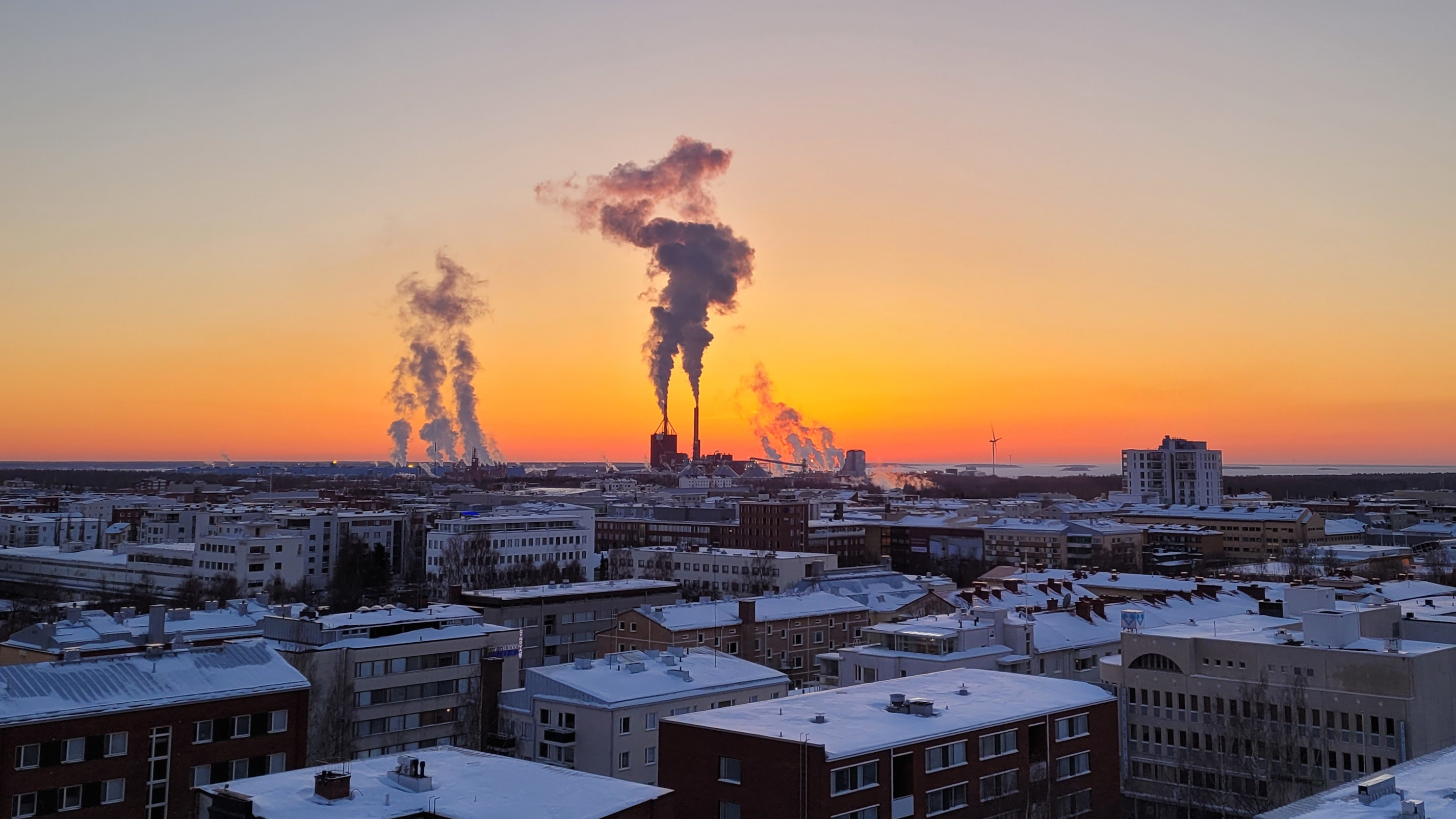Temperature inversions
The weather plays an important role in the formation and disappearance of air pollution. During winters, air quality has been observed to decline very quickly after long clear nights with weak winds. Then pollutants from different sources are emitted into the air, but because of poor mixing circumstances near the ground, pollutants released into the atmosphere's lowest layer are trapped at breathing level and can reach unhealthy levels in a few hours.

Winters are characterized by short days and low solar activity. The snow-covered ground is cold and its white colour reflects almost all heat coming in. When the sun goes down, the ground loses heat very quickly and this cools the air above the ground. Nights in the summertime are much shorter than nights during the wintertime when cooling of the ground can continue over a longer period of time. Weak winds prevent air mixing near the surface and clear skies increase the rate of cooling at the Earth's surface. Stable conditions inhibit vertical and horizontal mixing near the ground and consequently, favour the development of a strong surface temperature inversion or radiation inversion (see picture above). The condition like this is called an inversion because it is the reverse of a normal air pattern (i.e., warmer air below and cooler air above).
What factors have an affect on inversion?
The shape of the landscape has an impact on both the formation and intensity of inversion. For instance, over flat terrain inversion gradually intensifies if the surface cools. Over valleys cold air will flow down the slopes and settle under the warm air intensifying the inversion. Inversions frequently develop during evenings and nights and can occur at the surface or aloft in the atmosphere. During the daylight hours, surface inversions normally weaken or disappear when the sun warms the ground. In addition, wind speed and rain contribute to how quickly inversion will break up. Radiation inversions are the most common type of inversion, but there exists other inversions like advection and subsidence inversions as well.
How do inversions impact air quality?
Winter temperature inversions play a significant role in the winter pollution episodes in Nordic urban sites. An inversion can prevent the rise and dispersal of pollutants from the lower layers of the atmosphere, because warm air above cooler air acts like a lid, preventing vertical mixing and trapping the pollution material e.g. at the breathing level. Traffic emissions especially have a great impact on air quality at the breathing level, because they are released near the ground.
The strength and duration of the inversion and elevation of the release compared to the inversion elevation has a large influence on the air quality. Air pollution will continue to accumulate until inversion disappears. Traffic particularly and other sources add more pollutants to the air. A strong and low height inversion will lead to high pollutant levels, while a weak inversion will lead to lower levels. In other words, the smaller is the mixing volume; the higher is the pollution concentration. Inversions are also stronger and more common during the winter months. In summer, inversions are less frequent and weaker.

Why tall chimney is usually better than short chimney?
Inversion can influence pollution near the ground as well as the behaviour of smoke leaving a chimney. Under normal conditions, smoke plumes from chimneys would rise into the atmosphere and disperse, but in the case when an inversion is aloft, above chimneys, pollutants will be trapped underneath the inversion layer. When this inversion layer disappears, pollution concentrations can subsequently suddenly increase near the surface, if some vertical motion pushes the trapped smoke plume to the ground. To avoid this, many of the shorter chimneys have been replaced with taller ones, because taller chimneys are better able to mix pollutant throughout a greater volume of air. Alternatively, if a pollutant, e.g. a plume from a chimney, is released above the surface inversion layer, it will not have an opportunity to enter the inversion layer. In this case pollution disperses upward but not downward, due to the presence of the surface inversion.
Risk of severe air quality episode
The greatest potential for a severe air quality episode occurs when all the meteorological and other factors mentioned come simultaneously
Many sources of air pollution
High-pressure area
Light surface winds
Cooling air above the ground
Long, clear night
A strong and low inversion